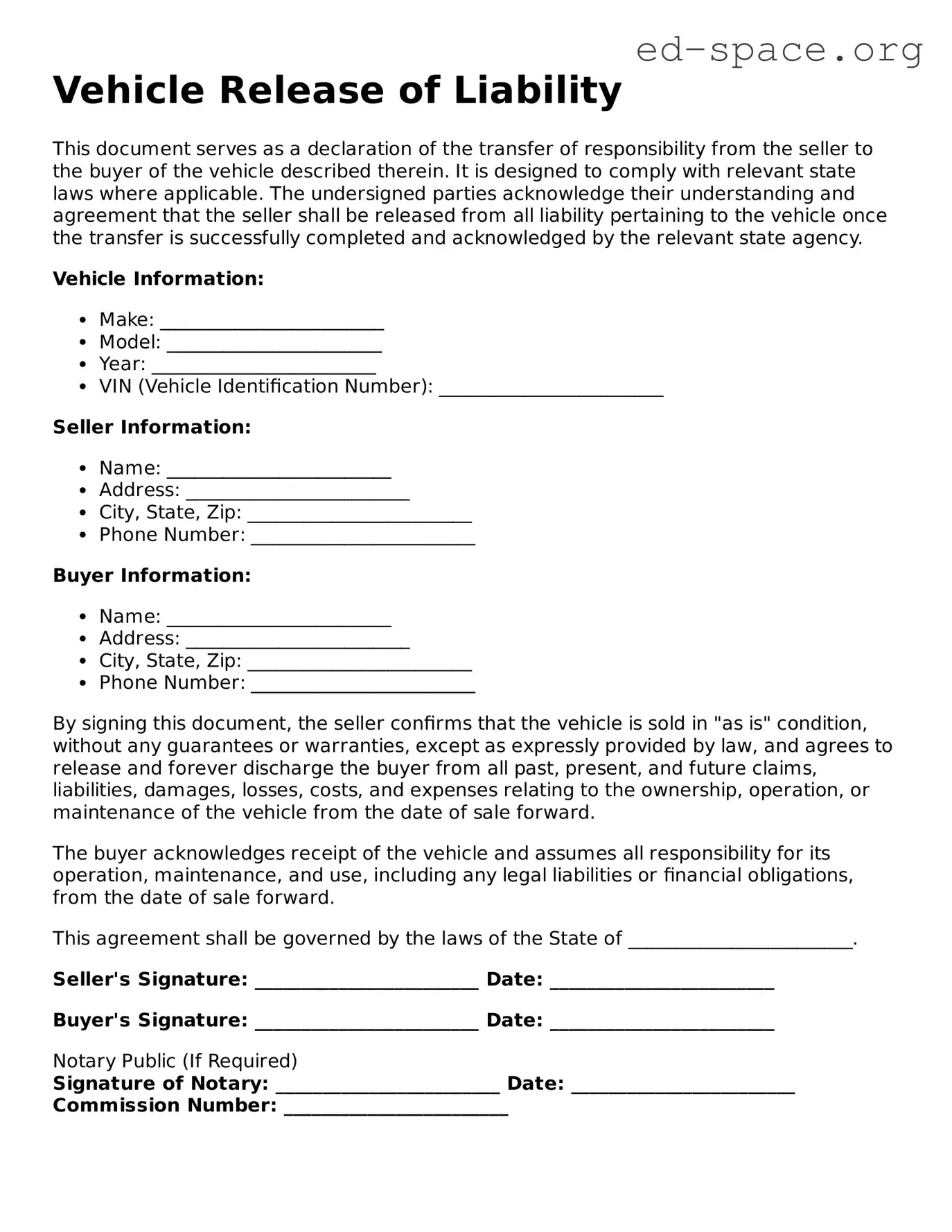Vehicle Release of Liability
This document serves as a declaration of the transfer of responsibility from the seller to the buyer of the vehicle described therein. It is designed to comply with relevant state laws where applicable. The undersigned parties acknowledge their understanding and agreement that the seller shall be released from all liability pertaining to the vehicle once the transfer is successfully completed and acknowledged by the relevant state agency.
Vehicle Information:
- Make: ________________________
- Model: _______________________
- Year: ________________________
- VIN (Vehicle Identification Number): ________________________
Seller Information:
- Name: ________________________
- Address: ________________________
- City, State, Zip: ________________________
- Phone Number: ________________________
Buyer Information:
- Name: ________________________
- Address: ________________________
- City, State, Zip: ________________________
- Phone Number: ________________________
By signing this document, the seller confirms that the vehicle is sold in "as is" condition, without any guarantees or warranties, except as expressly provided by law, and agrees to release and forever discharge the buyer from all past, present, and future claims, liabilities, damages, losses, costs, and expenses relating to the ownership, operation, or maintenance of the vehicle from the date of sale forward.
The buyer acknowledges receipt of the vehicle and assumes all responsibility for its operation, maintenance, and use, including any legal liabilities or financial obligations, from the date of sale forward.
This agreement shall be governed by the laws of the State of ________________________.
Seller's Signature: ________________________ Date: ________________________
Buyer's Signature: ________________________ Date: ________________________
Notary Public (If Required)
Signature of Notary: ________________________ Date: ________________________
Commission Number: ________________________
